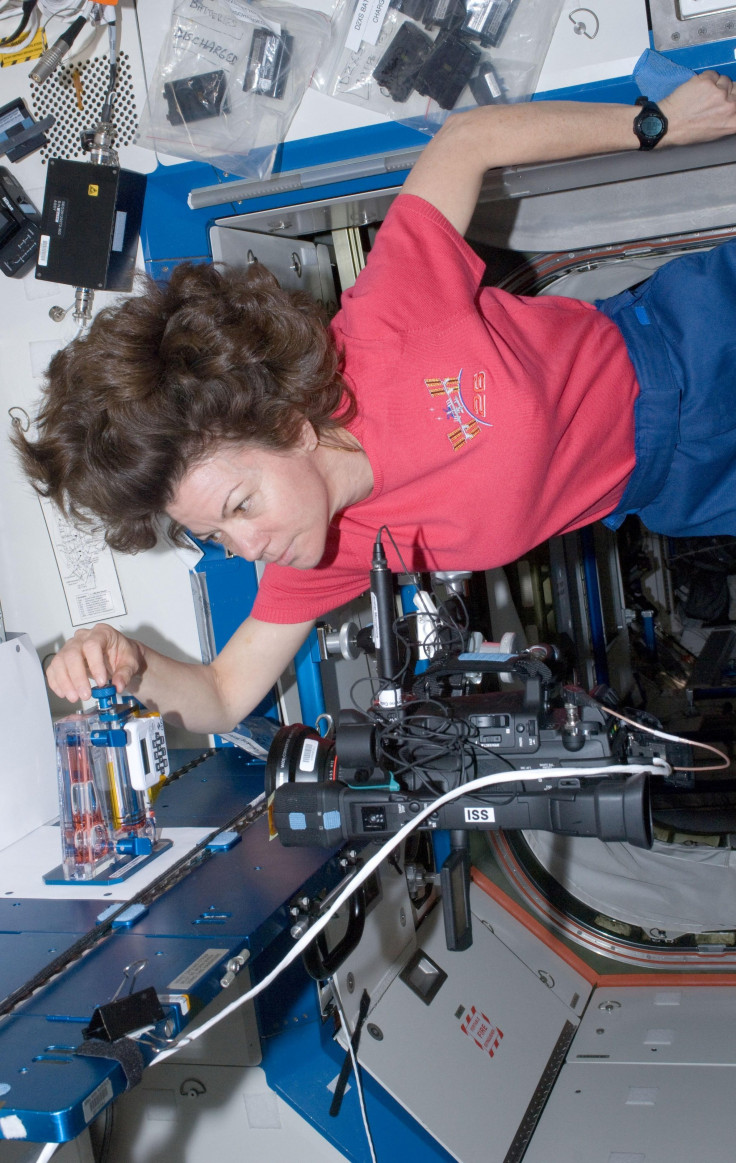NASA Figures Out How To Drink Coffee In Space With The Zero-Gravity Coffee Cup [VIDEO]
Scientists are trying to solve the problem of having coffee in space with a zero-gravity cup. Liquids don't behave normally absent gravity, and experiments are being conducted aboard the International Space Station that would make having a cup of coffee a normal part of the morning space routine.

Coffee, and other liquids, can't be easily controlled in space. On Earth, filling a glass with water or any liquid is a simple matter of pouring, and drinking. In space, liquids can't be poured into a glass -- the lack of gravity means liquids will not just fall into a cup. The lack of gravity also plays a role in actually drinking the beverage, as it will just disperse into the spacecraft.
Researchers at Portland State University in Oregon are trying to create a cup that overcomes the lack of gravity. Led by Mark Weislogel, scientists are performing the Capillary Flow Experiment aboard the International Space Station. Weislogel believes the problems with liquids in space are compounded by human beings conditioned behavior when drinking coffee or water. “When it comes to guessing what fluids will do in new systems, we are often in the dark,” Weislogel said in a statement.
The experiments being conducted aboard the ISS can do more than provide a creature comfort to the men and women aboard the research station for months at a time. Other liquids, including thermal coolants and urine, are unwieldy in space, and having a system in place to handle liquids would not only improve an astronaut’s life but also improve the mission itself.
One part of the Capillary Flow Experiment is the Interior Corner Flow Test. According to NASA, by placing two surfaces together to form an extremely narrow angle, liquids will follow that joint without the need for any additional pumping or other propulsion method. Much like capillaries, extremely small blood vessels, in the human body, these narrow veins can feed liquid throughout the ISS more efficiently and with more control than previous methods. After part of the experiment, the Vane Gap test, aims to determine the ideal angle for liquids to travel along the corners.
According to NASA, Weislogel and his team have already created three patented devices for use in space, the zero-gravity coffee cup, a condensing heat exchanger and a device that manages multiphase liquids.
The zero-G coffee cup was developed and tested by Weislogel, his colleagues and NASA astronaut Don Pettit during his time aboard the ISS. The coffee cup uses the theory behind the Interior Corner Flow test and has a sharp corner that allows for the liquid to travel up into the astronaut’s mouth. Pettit said, “As you sip, more fluid keeps coming, and you can enjoy your coffee in a weightless environment-- clear down to the last drop.” The cup can be used for other liquids and could become a common fixture in space and even be used by future space colonists. Recently, astronaut Karen Nyberg described how astronauts wash their hair in space.
A video of the zero-gravity coffee cup, courtesy of NASA, as well as a more recent video of the Capillary Flow Experiment, can be viewed below.
© Copyright IBTimes 2024. All rights reserved.






















